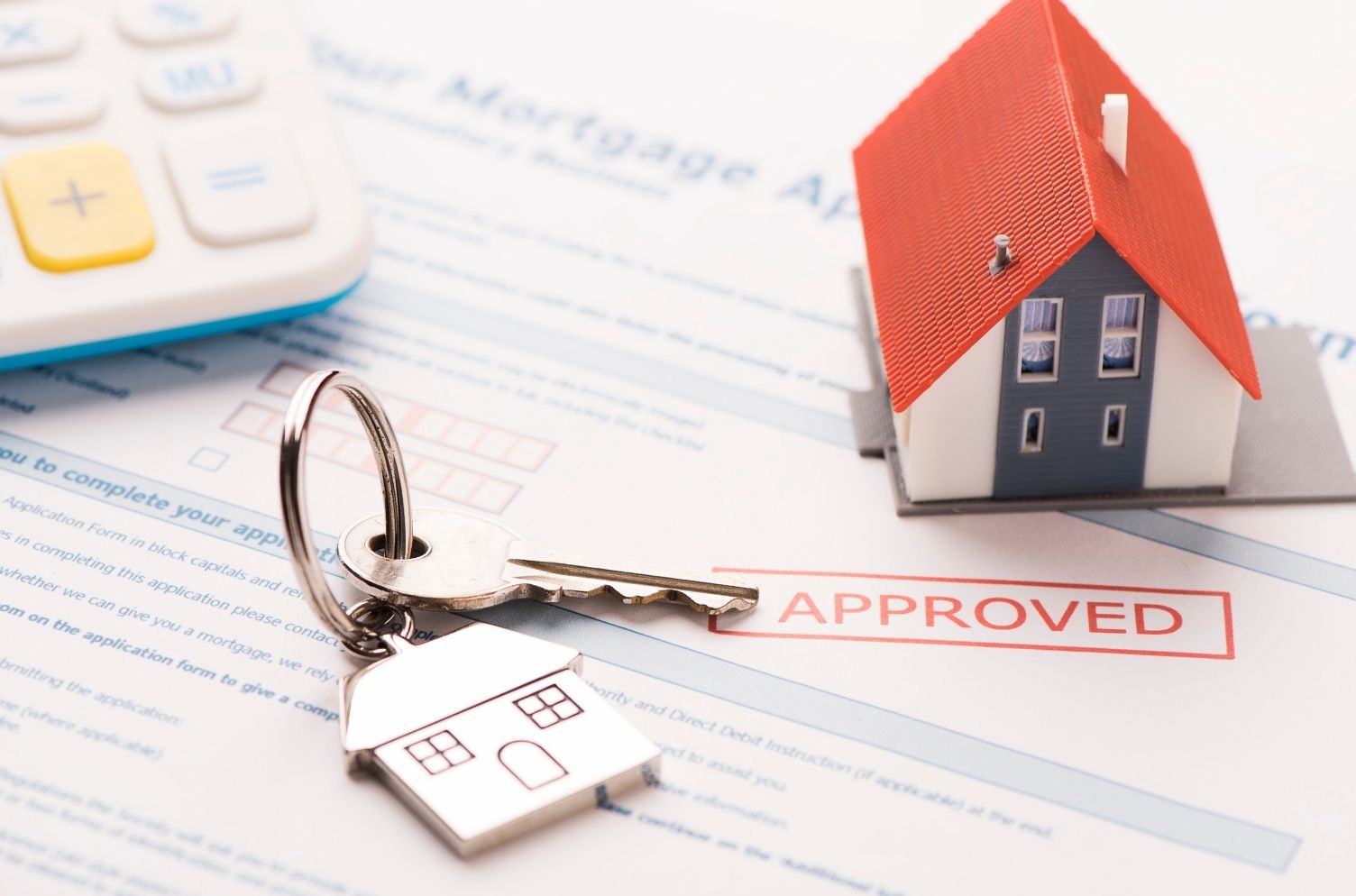Tips For Qualifying For A Buy-to-Let Mortgage

Struggling to figure out how to qualify for a buy-to-let mortgage? One crucial fact: most lenders expect a minimum deposit of 20-40% of the property’s value. This blog will provide essential Tips For Buy To Let Mortgage Qualification, helping you understand what steps to take next.
Understanding Buy-to-Let Mortgages
A buy-to-let mortgage lets you borrow money to buy a property that you rent out. Lenders look at rental income and your financial stability before approving these loans.
What is a Buy-to-Let Mortgage?
A buy-to-let mortgage is a home loan for buying properties to rent out. These mortgages are not intended for personal homes or residence. Buy to let Property investors use them when purchasing rental properties.
Buy-to-let mortgages often require a larger deposit than residential loans. Typically, you need at least 25% of the property's value as a down payment. Lenders assess potential rental income before approving the loan to ensure it covers monthly interest payments and other expenses.
This makes renting profitable for landlords while securing the lender's investment.
How Do Buy-to-Let Mortgages Work?
Buy-to-let mortgages need a larger deposit than residential ones. Expect to put down around 20-40%. Lenders want the rental income to be at least 25-45% higher than mortgage payments.
This helps cover costs and ensures you can pay the loan.
Interest rates for buy-to-let mortgages tend to be higher. Banks use stress-testing to check if you can afford the repayments under different interest rates. You usually repay interest-only rather than paying off the whole loan each month.
Make sure your finances are stable before applying for this type of mortgage. If you want to know how much deposit you would need to place, make sure to contact our expert team at Revolution Brokers that will guide you on your mortgage journey.
Key Criteria for Qualification
You need to meet specific lending criteria to qualify for a buy-to-let mortgage. These include having a good credit score and showing potential rental income as well as maximum age and the maximum loan you can acquire.
Minimum Deposit Requirements
To qualify for a buy-to-let mortgage, a minimum deposit of 20-40% is required. For new build houses, you will need a 25% deposit. New build flats require an even larger deposit of about 35%. This makes it crucial to plan your finances carefully before applying.
Expected Rental Income
Rental income must surpass 125-145% of your mortgage payments. Lenders require this to ensure you can cover the mortgage and other expenses like maintenance and insurance.
Calculate rental charges carefully. Ensure they will cover not just the mortgage but also void periods when tenants might leave. It helps to use a mortgage calculator for more precise figures.
Credit History and Financial Stability
A good credit score is crucial for a buy-to-let mortgage application. Aim for at least 650 to show lenders you are trustworthy. Avoid recent bankruptcies or repossessions as they can negatively impact your chances.
Lenders expect proof of financial stability before approving a mortgage. They examine your debts, income, and existing loans. Make sure current credit card balances are low and pay bills on time. Show steady employment history or consistent business income if self-employed.
Special Considerations for Different Borrowers
First-time landlords might face stricter requirements. Portfolio landlords need to show strong financial stability.
First-Time Landlords
Some lenders offer buy-to-let mortgages to first-time landlords with no minimum income required. This makes it easier for new investors to enter the property market. Applicants need to be at least 21 years old.
Portfolio Landlords
Portfolio landlords own several rental properties. Lenders often have strict criteria for them. They look at the overall loan-to-value (LTV) ratio of your entire portfolio.
Expect detailed checks on your rental income and mortgage repayments. Your credit history needs to be spotless. Many lenders will also want proof of financial stability. If you meet these requirements, you can qualify for a buy-to-let mortgage easier.
Overseas Investors
Overseas investors face unique challenges when seeking a preferable buy-to-let mortgage term. Lenders often require higher deposits, sometimes up to 40% of the property's value. Compliance with extra regulations and checks is mandatory for foreign buyers.
Currency exchange rates can affect the cost of a property investment. Mortgage brokers who specialise in overseas clients can help handle these issues. Good credit history and financial stability are crucial factors for approval.
Steps to Increase Your Eligibility
Boost your credit score and choose the right property. Consult with a mortgage advisor for personalised advice. Read more to discover how these steps can help you qualify for a buy-to-let mortgage!
Enhancing Your Credit Score
Check your credit record often. Aim for a score of at least 650 to qualify for buy-to-let mortgage options. Avoid recent bankruptcies or repossessions. These can hurt your chances.
Pay off outstanding debts promptly and on time. Lenders look at your financial history closely. A good credit score shows you are reliable with money, making you a safer bet for mortgage lenders.
Choosing the Right Property
Study the local property market before making a choice. Look for areas with high rental demand and reasonable property prices. Checking economic indicators can help to predict future value.
Identify your target tenants. Are you aiming to rent to students, families, or young professionals? Each group has different needs and preferences in housing. Reaching out to estate agents may give insights into what each tenant type values most in a living space.
Consulting with Mortgage Advisors
After choosing the right property, seek advice from mortgage brokers. These experts help you navigate buy-to-let mortgage applications with ease.
Consult independent advisers too. They offer a broader range of options than lenders' in-house teams. Be sure to ask about fees and interest rates beforehand. Their insights can save you time and money in your application process.
Conclusion
Getting a buy-to-let mortgage can seem tough. But with good planning and research, you can succeed. Focus on meeting key criteria like minimum deposit, rental income, and credit score.
Seek professional advice to enhance your chances. Investing wisely in the right property will pay off in the long run.
FAQs
1. What are the basic requirements for a buy-to-let mortgage application?
To apply for a buy-to-let mortgage, you need to meet certain criteria. These include having a good credit history and sufficient income. Lenders also look at the property's value and expected rental income.
2. How can I improve my chances of getting approved for a buy-to-let mortgage?
Improve your chances by ensuring your finances are in order. Pay off existing debts and save up for a larger deposit. It's also helpful to show strong rental demand in the area you're buying.
3. Are there different types of buy-to-let mortgages available?
Yes, there are various types such as fixed-rate mortgages, variable-rate mortgages, and interest-only mortgages. Each has its pros and cons depending on your financial situation.
4. What tax implications should I be aware of when applying for a buy-to-let mortgage?
Be aware that you'll have to pay income tax on rental profits, capital gains tax if you sell the property at a profit, and possibly flat-rate tax or other taxes related to properties.
5. Can I refinance an existing residential mortgage into a buy-to-let mortgage?
Yes, refinancing is possible but subject to lender approval based on property value and rental potential.
6. Do landlords need specific insurance when they get a buy-to-let mortgage?
Yes! Landlords must have home insurance tailored to rented properties which often includes coverage like liability protection against tenant claims or damage repairs due from renters.
Related Posts
Ask the Expert
Mortgage Brokers




